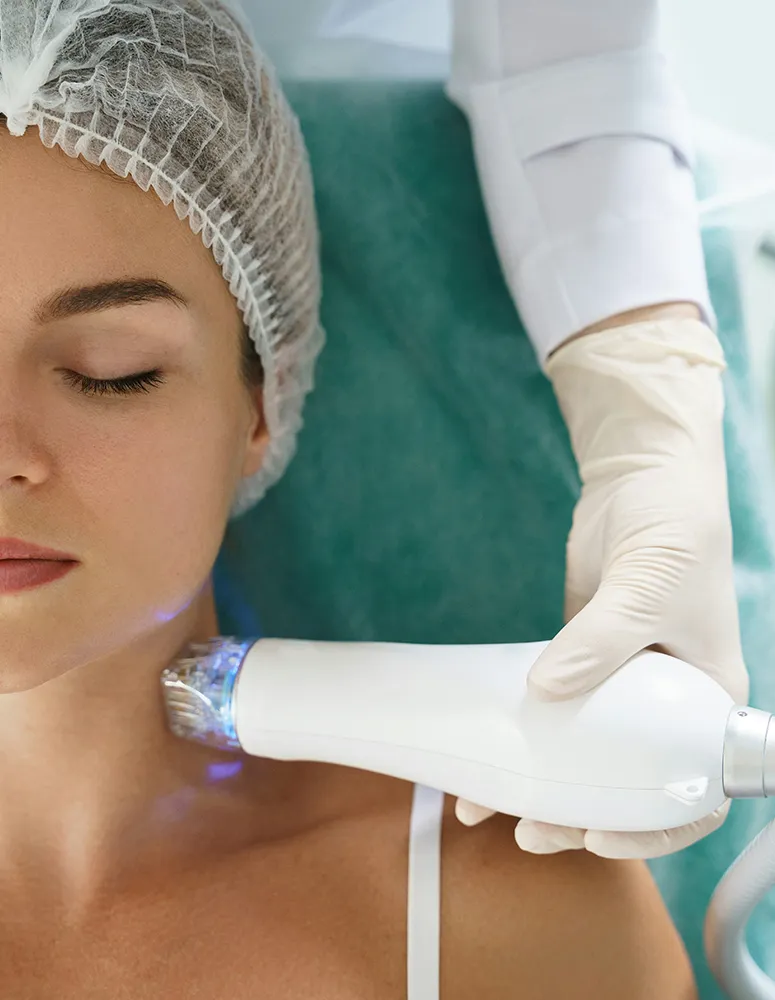Microneedling: Collagen induction for skin renewal
This is the third in our three-part series on Dermaplaning, HydraFacials, and Microneedling.
“Microneedling,” also known as collagen induction therapy, has gained immense popularity in recent years for its ability to stimulate the skin’s natural healing processes. Tiny, controlled punctures are made using a device equipped with fine needles, triggering collagen production and rejuvenating the skin. The technique can improve the appearance of skin conditions such as:
- Acne
- Hair loss (alopecia)
- Dark spots or patches on your skin (hyperpigmentation)
- Enlarged pores
- Reduced skin elasticity
- Scars
- Stretch marks
- Sun damage
- Fine lines and wrinkles
Microneedling’s benefits include:
- Collagen production: By inducing controlled injury, microneedling prompts the skin to produce collagen and elastin, resulting in improved firmness and elasticity.
- Reduced scarring: By encouraging the growth of new, healthier skin, microneedling can diminish the appearance of scars, including acne scars.
- Enhanced product absorption: Like dermaplaning and HydraFacials, microneedling enhances the absorption of topical products, maximizing their impact on the skin.
Because it is done by a dermatologist or skilled technician, microneedling can be relatively expensive ($200-$800-plus per treatment), and at least three treatments over several months are typically needed to see significant results. On the other hand, microneedling is significantly cheaper than laser skin resurfacing treatments, which can cost $1,000 or more per session.
Recovery time is relatively short with this treatment, but it can still influence the timing of your treatments. Each facial microneedling session takes about 30 minutes—more, if your provider will apply a numbing ointment before treatment and a calming treatment to reduce redness and irritation afterward. Although this won’t require time off work, your face will be visibly red after treatment, so you may be more comfortable taking the rest of the day off—or scheduling your appointment for mid- to late-afternoon so that you can go home rather than return to the job after treatment.
Home microneedling treatments are also available, utilizing a device called a derma roller. However, the needles are not as sharp as those used by aestheticians or dermatologists, may not penetrate as deeply, and therefore may not be as effective. Also, since microneedling involves tiny punctures of the skin, cleanliness is essential.
As always, I recommend consulting with your dermatologist if you are considering trying one of the treatments we’ve covered in this mini-series.
Of course, you can also achieve improved results by building your beautiful skin from the inside out—by eating your water, exercising, managing your stress, and nurturing your skin with quality skincare products.
But it’s always nice to have options. And I’m glad to see that the beauty industry is responding to the growing desire of so many people to unlock the full potential of their skin, revealing a luminosity that, ideally, radiates from within.
